
How Many Calories Do Cyclists Burn?
Riding an e-bike is an excellent way to stay fit and burn calories efficiently. The number of calories cyclists burn depends on factors like speed, terrain, intensity, and body weight. Understanding how many calories you burn while cycling helps improve fitness tracking, optimize workouts, and support better nutrition and recovery for long-term performance.
How Many Calories Do Cyclists Burn?
Cyclists burn calories based on factors like weight, speed, intensity, terrain, and ride duration. On average, moderate cycling can burn around 500–600 calories per hour, while vigorous rides may burn 700–1,200 calories or more. Outdoor cycling usually burns slightly more than stationary biking due to wind resistance and varied terrain. Overall, cycling is an effective way to manage weight, improve cardiovascular health, and boost fitness, with calorie burn increasing as you ride harder, longer, or on more challenging routes.
Factors Affecting Calories Burned While Cycling
The number of calories cyclists burn during a ride can vary widely based on several key factors. Understanding these factors can help both recreational and professional cyclists optimize workouts, improve performance, and track energy expenditure more accurately.
Rider’s Weight and Body Composition
A cyclist’s body weight plays a significant role in calorie burn. Heavier riders expend more energy because their bodies require more effort to move. Muscle mass also increases calorie burn, as muscles consume more energy than fat even at rest. Conversely, higher body fat may slightly reduce overall efficiency but still contributes to total energy expenditure.
Cycling Intensity and Speed
The faster and more vigorously you pedal, the more calories you burn. Moderate cycling, such as cruising at 12–14 mph (19–22 km/h), burns fewer calories than high-intensity efforts or sprinting. Interval training or hill sprints can significantly boost calorie expenditure.
Terrain (Flat, Hilly, or Mountainous)
Cycling on hills or rough terrain requires more energy than riding on flat surfaces. Uphill climbs, mountainous routes, or uneven trails force your body to work harder, increasing both heart rate and calorie burn. Even small inclines can noticeably raise energy expenditure over long rides.
Type of Cycling (Road, Mountain, BMX, or Stationary)
The type of bike and cycling environment affect calories burned. Outdoor cycling generally burns more calories than stationary biking due to factors like wind resistance, balance, and varied terrain. Mountain biking and BMX riding demand higher muscle engagement, while stationary cycling allows for controlled, consistent workouts.
Duration of Cycling
The length of your ride directly impacts total calorie burn. Longer sessions naturally expend more energy, while consistent cycling over weeks and months improves endurance and overall efficiency, resulting in higher long-term calorie expenditure.
Environmental Factors (Wind, Weather, Temperature)
External conditions can influence energy use. Strong headwinds, rain, extreme heat, or cold can increase the effort required to maintain speed, leading to higher calorie burn. Similarly, riding in challenging conditions improves strength and endurance.
Calories Burned by Recreational Cyclists
Cyclists can burn a significant number of calories depending on pace, body weight, and terrain. Riding at a moderate pace (12–14 mph / 19–22 km/h) is ideal for endurance and steady workouts:
-
A 125-lb (57 kg) rider burns about 210–240 calories per 30 minutes.
-
A 155-lb (70 kg) rider burns around 260–298 calories per 30 minutes.
-
A 185-lb (84 kg) rider burns 311–355 calories per 30 minutes.
Over an hour, these numbers roughly double, making moderate cycling effective for weight management and overall fitness.
At a vigorous pace (16–20 mph / 26–32 km/h), calorie burn increases substantially:
-
125-lb rider: 300–495 calories per 30 minutes
-
155-lb rider: 372–614 calories per 30 minutes
-
185-lb rider: 444–733 calories per 30 minutes
In one hour, vigorous cycling can burn 700–1,400 calories, depending on weight and intensity.
Calorie burn also depends on distance, terrain, and environmental factors. Heavier riders burn more calories per mile, and hilly routes or strong winds increase energy expenditure, helping cyclists maximize calorie burn and improve fitness efficiently.
Stationary vs Outdoor Cycling
Calorie burn varies between stationary and outdoor cycling. Outdoor rides generally burn more calories because of wind resistance, terrain changes, and balance effort. A 155-lb (70 kg) rider burns about 260–300 calories per 30 minutes outdoors versus 240–280 calories on a stationary bike.
Stationary cycling provides consistency and convenience, while outdoor cycling challenges more muscles and real-world conditions.
Quick Comparison (155-lb rider):
-
Stationary: 240–280 kcal (moderate), 370–580 kcal (vigorous)
-
Outdoor: 260–300 kcal (moderate), 400–620 kcal (vigorous)
Tracking with fitness apps or power meters helps improve accuracy and training results.
Calories Burned by Professional Cyclists
Professional cyclists burn an extraordinary number of calories due to long rides, high intensity, and challenging terrain. Understanding how many calories professional cyclists burn gives insight into the extreme energy demands of competitive cycling.
-
Tour de France: Calorie burn varies by stage. Flat stages typically expend around 4,000 kcal per stage (~1,000 kcal per hour). Hilly stages increase energy needs to 4,000–6,000 kcal, while mountain stages can reach up to 7,000 kcal per stage, depending on climbs and terrain difficulty.
-
One-Day Classics / Monuments Races: These races are shorter but intense, with cyclists burning approximately 6,000 kcal in a single event.
-
Extreme Conditions: Weather, terrain, and race intensity can dramatically increase calorie burn. Rain, strong winds, or cobblestone sections can add 1,000 kcal or more compared to ideal conditions.
How to Maximize Calories Burned While Cycling
To get the most out of every ride, cyclists can apply a few key strategies to boost calorie burn and performance:
-
Increase Intensity Gradually
Incorporate interval training or slightly raise your speed to challenge your endurance and elevate your heart rate. -
Add Resistance or Hills
Riding uphill or using higher resistance on a stationary bike engages more muscles and significantly increases energy expenditure. -
Maintain Proper Cycling Position
An efficient posture improves aerodynamics and power transfer, helping you sustain higher speeds and burn more calories. -
Track Calorie Burn Accurately
Use tools like power meters, smart trainers, or heart rate monitors for precise tracking and progress monitoring. -
Follow Smart Nutrition for Endurance and Recovery
Fuel with balanced carbs and proteins before and after rides to support energy levels and muscle recovery.
These methods help riders of all levels improve efficiency, performance, and overall calorie burn during every cycling session.
Burn Calories with isinwheel Electric Bikes
Learn how many calories cyclists burn on an isinwheel e-bike. With adjustable pedal assist, powerful motors, and long-range batteries, isinwheel electric bikes help riders stay active, burn calories efficiently, and improve fitness on every ride.
|
Images |
 |
 |
 |
 |
 |
 |
|
Models |
||||||
|
Top Speed |
20 MPH |
20 MPH |
18.6 MPH |
21.7 MPH |
19 MPH |
20 MPH |
|
Peak Power |
500W |
500W |
500W |
500W |
500W |
750W |
|
Battery |
36V 7.8Ah |
36V 13Ah |
36V 7.8Ah |
36V 10.4Ah |
36V 10.4Ah |
36V 10.4Ah |
|
Max Range |
28 miles |
65 miles |
35 miles |
60 miles |
55 miles |
55 miles |
|
Speed (before unlock) |
10/15/25 km/h |
6/10/15/20/25 km/h |
10/15/25 km/h |
6/10/15/20/25 km/h |
6/10/15/25 km/h |
6/10/15/20/25 km/h |
|
Speed (after unlock) |
15/25/32 km/h |
10/15/20/25/32 km/h |
15/25/30 km/h |
6/10/15/20/35 km/h |
15/25/30 km/h |
10/15/20/25/32 km/h |
|
Brake System |
front and rear disc brakes |
mechanical brake |
disc brakes |
mechanical disc brakes |
dual disc brakes |
dual disc brakes |
|
Max Load |
120 kg |
120 kg |
120 kg |
150 kg |
120 kg |
120 kg |
|
Net Weight |
23.2 kg |
27 kg |
23.3 kg |
27kg |
26.5 kg |
28.4 kg |
|
Suspension |
Rear mid shock absorber |
Front suspension |
Adjustable front fork + comfort saddle |
Hydraulic fork |
Dual |
Aluminum front fork |
|
Max Climb |
20% |
37% |
25% |
20% |
20% |
20% |
|
Tire Size |
14×1.95" |
26×1.95" |
16×1.75" |
26×1.95" |
16×2.15" |
26×1.95" |
|
Tire Type |
Pneumatic |
Pneumatic |
Pneumatic |
Pneumatic |
Pneumatic |
Pneumatic |
|
IP Rating |
IPX4 |
IP65 |
IPX65 |
IPX5 |
IPX4 |
IPX4 |
|
Removable Battery |
No |
Yes |
No |
Yes |
Yes |
Yes |
|
Rider Height |
150–185 cm |
160–192 cm |
155–185 cm |
160–190 cm |
140–180 cm |
150–192 cm |
Conclusion
Cycling is an excellent calorie-burning workout that boosts endurance and overall fitness. The number of calories burned depends on factors like weight, speed, duration, and terrain. By tracking rides and adjusting intensity, cyclists can optimize performance and reach their fitness goals faster.
Whether on the road or riding an isinwheel e-bike, cycling remains one of the most effective and enjoyable ways to stay active and healthy.
FAQs
How many calories do cyclists burn a day?
The number of calories cyclists burn daily depends on how long and how hard they ride. On average, recreational riders burn 400–1,000 calories per hour, while professional cyclists in training or races can burn 3,000–7,000 calories per day. Factors like body weight, terrain, and intensity greatly affect total daily expenditure.
How many calories does cycling for 30 minutes burn?
A 30-minute cycling session burns between 200 and 600 calories, depending on speed, resistance, and rider weight. For example, a 155-lb (70 kg) cyclist riding at a moderate pace (12–14 mph) burns around 260–300 calories, while vigorous cycling (16–20 mph) can double that amount.
Does cycling actually burn a lot of calories?
Yes, cycling is one of the most effective calorie-burning workouts. It engages multiple muscle groups—legs, core, and glutes—while improving cardiovascular fitness. Even short daily rides can lead to significant calorie burn and long-term fat loss when combined with proper nutrition.
Does cycling reduce belly fat?
Cycling helps reduce overall body fat, including belly fat, when done consistently. While spot reduction isn’t possible, regular cycling paired with a balanced diet increases calorie expenditure and promotes a leaner midsection over time. Interval training and outdoor rides are especially effective for fat loss.
The Latest Posts
Explore isinwheel products
City E Scooter | Off-Road Scooter
Fastest Scooter | Kids Scooters




















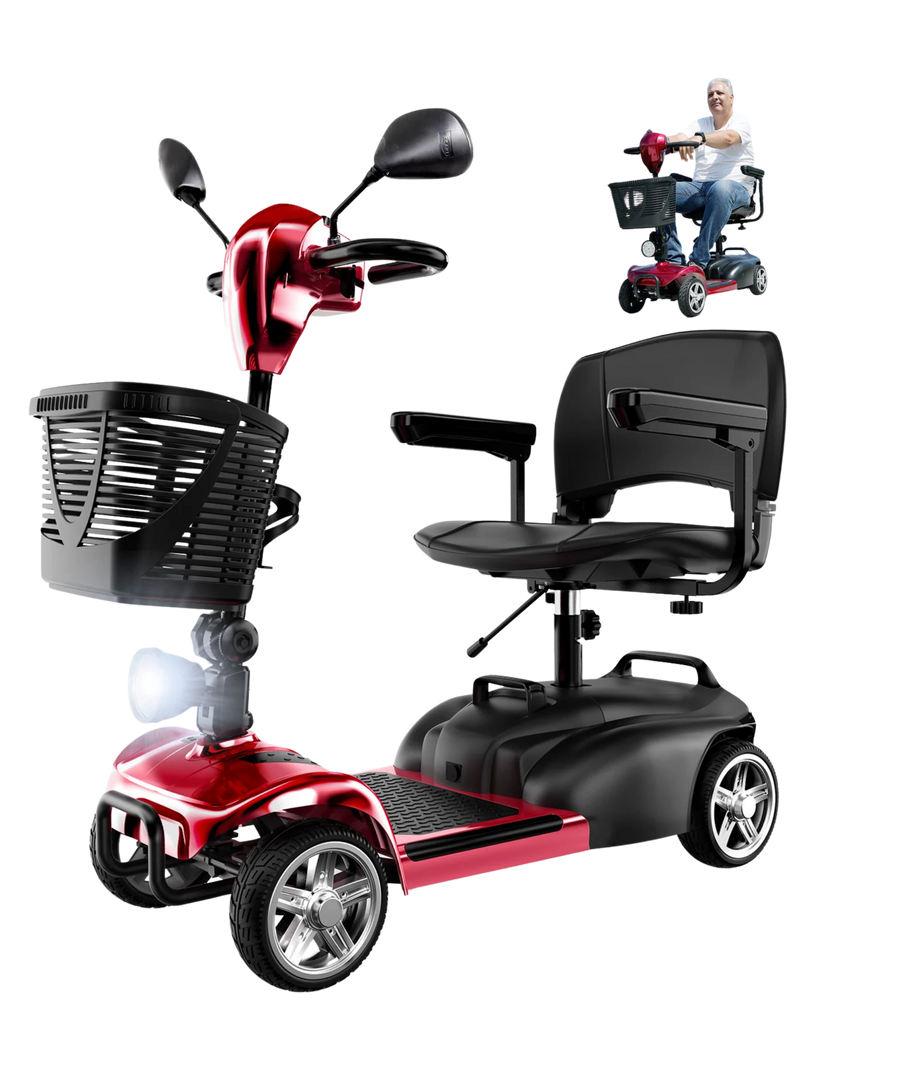
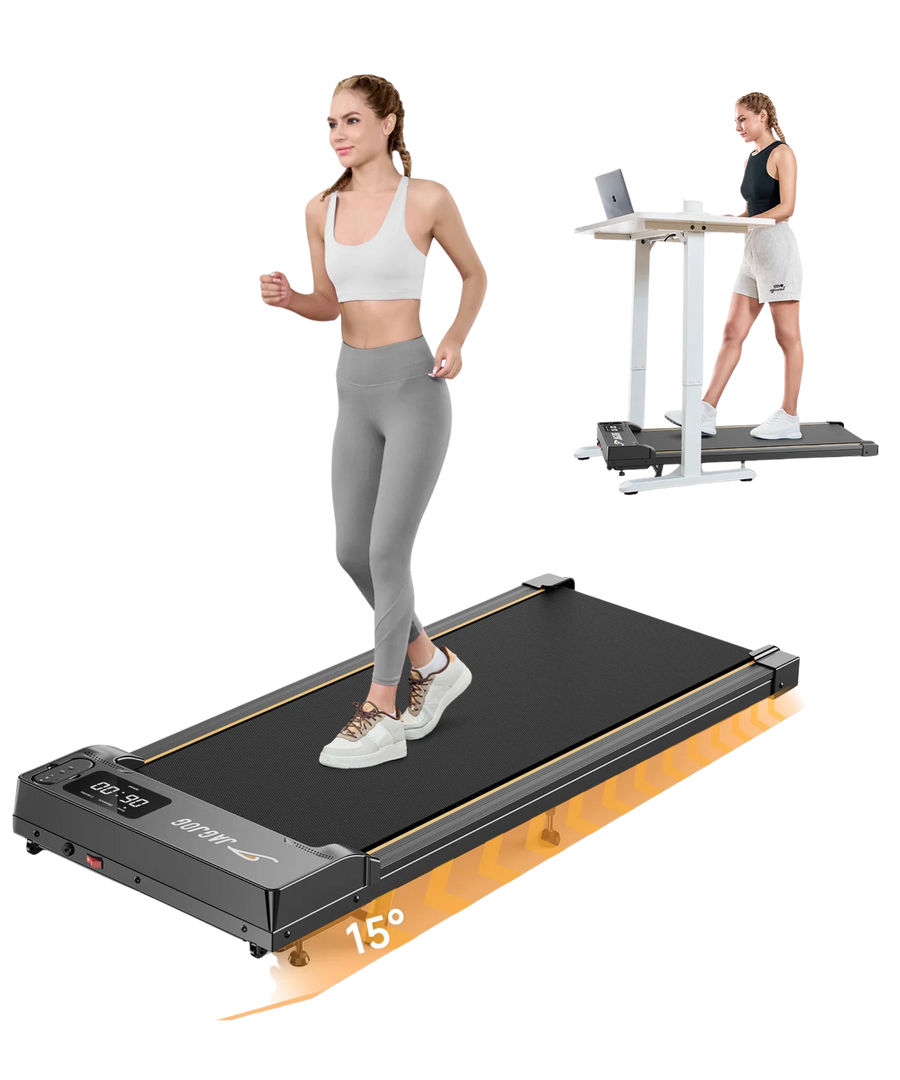

























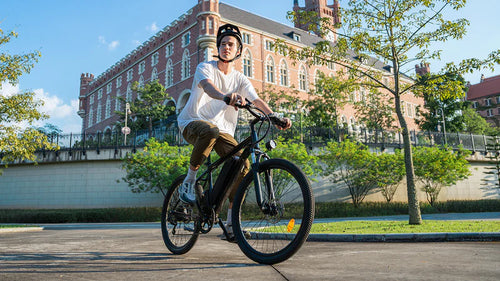
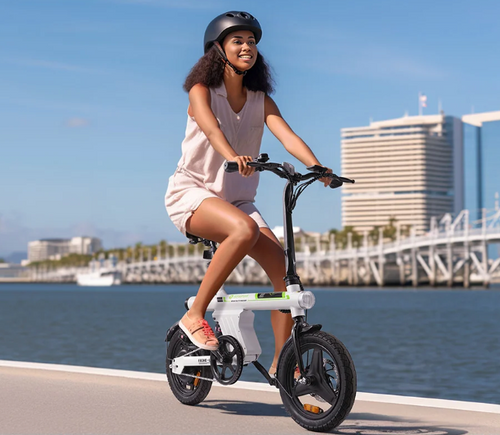


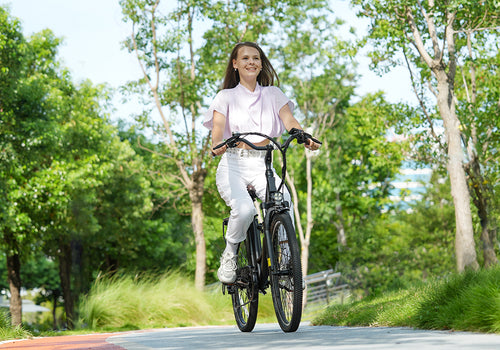
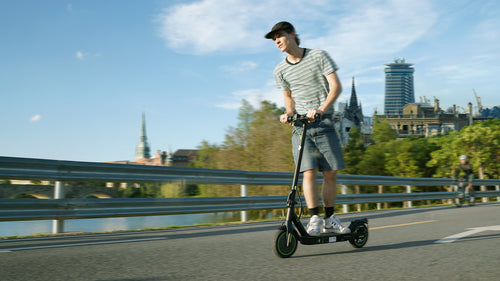


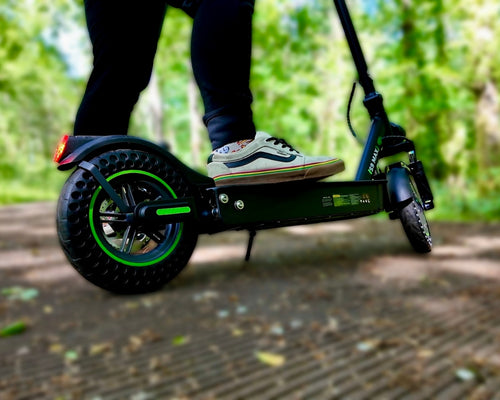
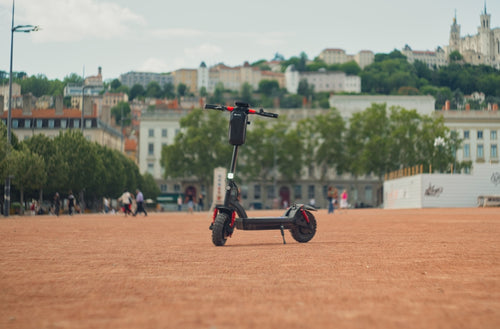
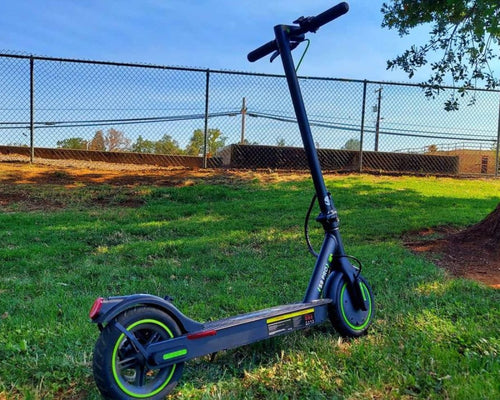





Leave a comment